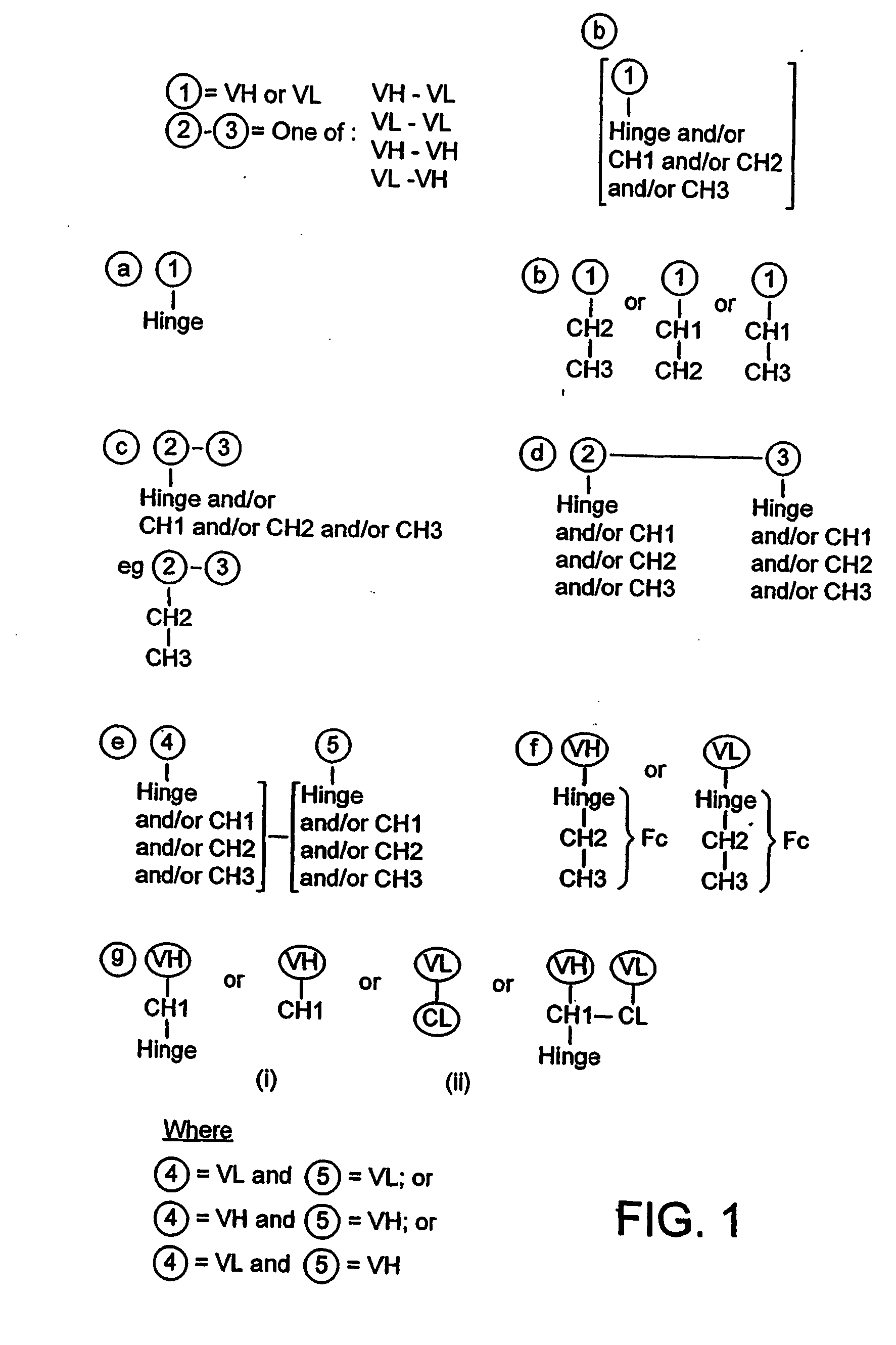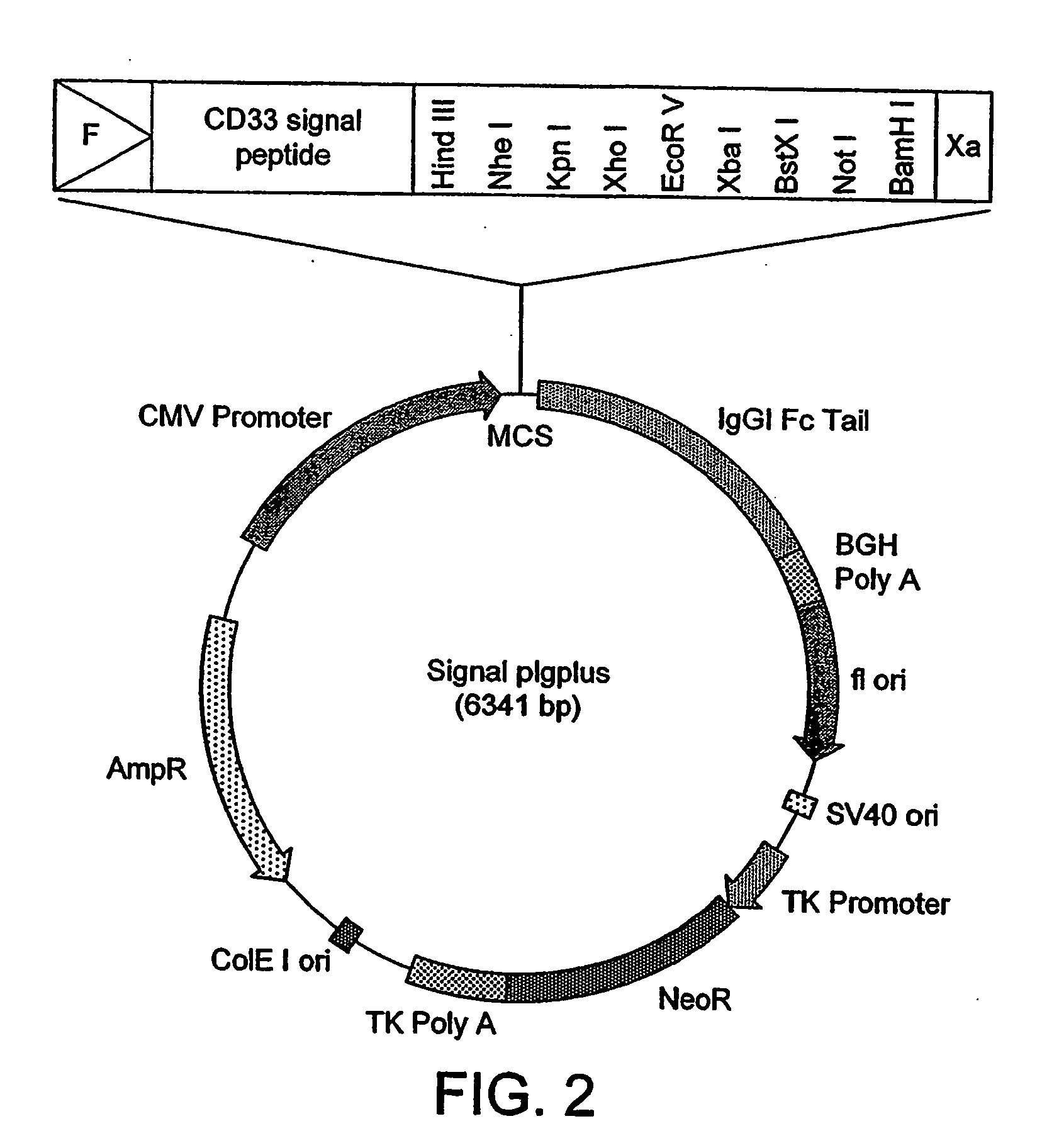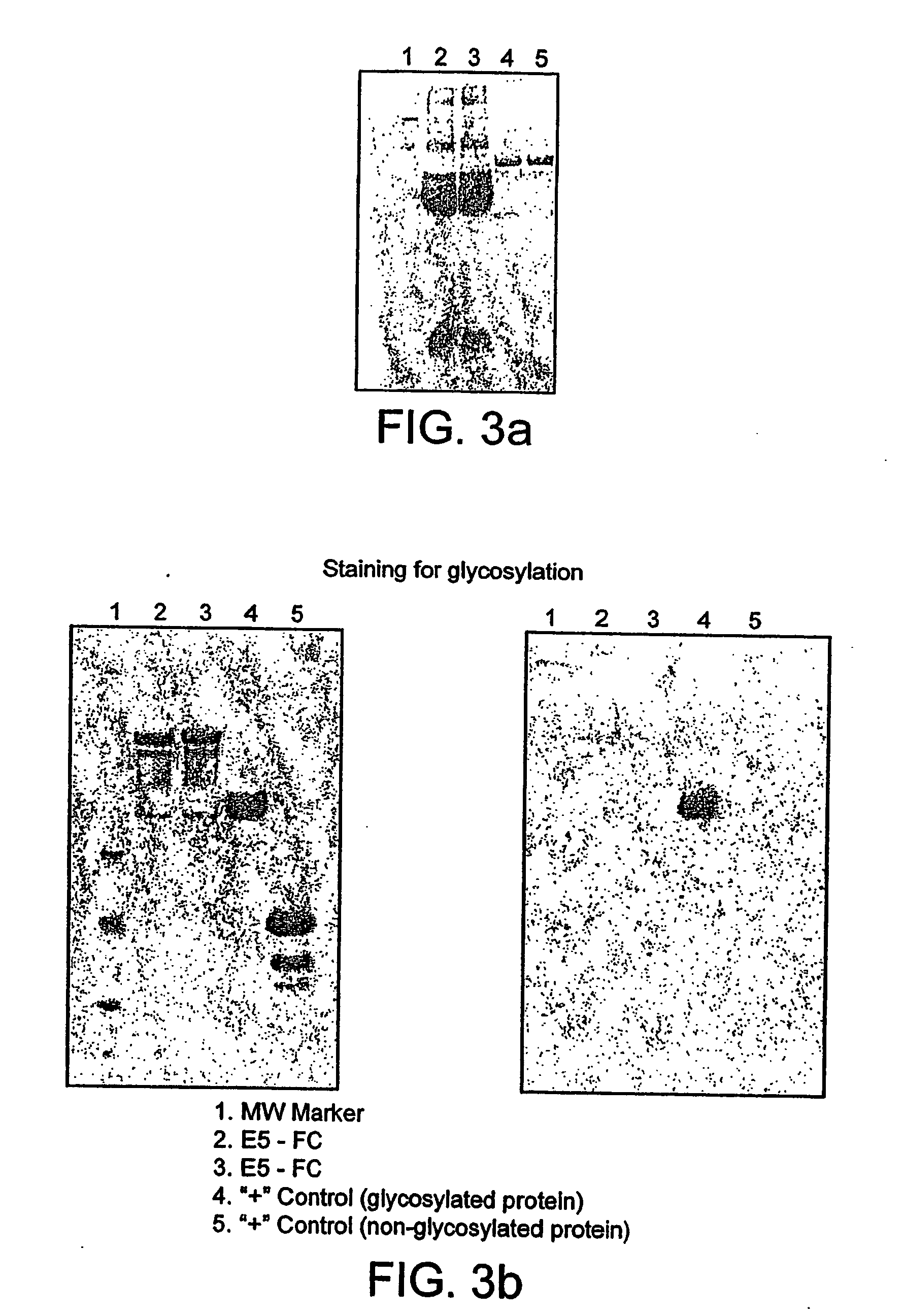Fc fusion
a technology of fusion and antibody, applied in the field of fusion, can solve the problems of inability to fully realize the effect of fusion, so as to improve the half-life of the dab-effector group
- Summary
- Abstract
- Description
- Claims
- Application Information
AI Technical Summary
Benefits of technology
Problems solved by technology
Method used
Image
Examples
example 1
Creation of dAb-Fc Fusion Constructs
[0213] This example demonstrates a method for making Vκ-Fc and VH-Fc fusions (for both fusions, Fc is derived from IgG1, the Fc=hinge C2-CH3). A β-galactosidase binding Vκ dAb E5 was used to create Vκ-Fc fusion and an alkaline phosphatase (APS) binding VH dAb VH2 was used to create VH-Fc fusion (sequences of Vκ dAb E5 and VH dAb VH2 are shown in Table 1a).
[0214] Hind III and Not I restriction sites were introduced onto the 5′ and 3′ends, respectively, of the E5 and VH2 dAbs using oligonucleotides VK5Hind, VH5Hind and VH3Not (Table 1a, note that there was no need to introduce Not I site onto the 3′ end of the E5 dAb, as it already exists).
[0215] To create E5-Fc and VH2-Fc fusions, Hind III / Not I digested fragments containing E5 Vκ dAb and VH2 VH dAb were then ligated into Hind III / Not I digested Signal pIgplus vector (R&D Systems Europe Ltd, FIG. 2). Ligation mixtures were transformed into competent E. coli TG1 cells and recombinant clones were ...
example 2
Expression of the d-Fc Fusion Proteins in Mammalian Cells
[0217] This example demonstrates that E5-Fc and VH2-Fc fusions Example 1) could be expressed in mammalian cells and that the produced proteins retain antigen specificity of the parental dabs.
[0218] Three mammalian cell lines (COS1, COS7 and CHO) were transfected with E5 dAb in pIgplus and VH2 dAb in pIgplus plasmid DNA (example 1) using FuGENE 6 Transfection Reagent (Roche). Stably transformed cell lines were generated using selection medium containing G418 (1 mg / ml for COS1 and COS7 cells and 0.5 mg / ml for CHO cells).
[0219] To check the expression of the dAb-Fc fusion proteins, 25 ml of the spent tissue culture medium from transfected cells were collected, filtered using 0.45μ filter and then passed through Protein A Sepharose column. dAb-Fc fusions were eluted using 1.6 ml 0.1M Glycine pH 2.0 into 0.4 ml 1M Tris, pH 9.0. 50 μl of the resulting 2 ml sample was tested in ELISA (standard ELISA protocol was followed) 9&well p...
example 3
Binding of the E5-Fc Fusion Protein to the Cell Line Expressing Human Fc Receptors
[0223] This example demonstrates that E5-FC fusion protein is able to bind to the cell line expressing human Fc receptors. Purified E5-Fc protein was labelled with fluorescein at 3.3 / 1 ratio of Fluo / Protein. The labelled protein (491 μg / ml concentration) was then used for FACS analysis. Human monocyte-like U937 cells which express two types of human FcRs (CD 64 and CD32) were used to assess the ability of E5-Fc fusion protein to bind these receptors. FACS results indicate that E5-Fc fusion protein binds to the U937 cell line (5×105 U-937 cells were incubated with 80 μl of the 1:50 dilution of the labelled protein and examined live) (FIG. 4). Receptor blocking studies on U-937 cells indicated that E5-Fc chain binds primarily to CD32 receptor (data not shown). To confirm this result, Raj 1 cells (expressing only CD32 receptor) were used for FACS analysis. FACS results demonstrate that E5-Fc chain binds ...
PUM
| Property | Measurement | Unit |
|---|---|---|
| half life | aaaaa | aaaaa |
| tβ half life | aaaaa | aaaaa |
| concentration | aaaaa | aaaaa |
Abstract
Description
Claims
Application Information
 Login to View More
Login to View More - R&D
- Intellectual Property
- Life Sciences
- Materials
- Tech Scout
- Unparalleled Data Quality
- Higher Quality Content
- 60% Fewer Hallucinations
Browse by: Latest US Patents, China's latest patents, Technical Efficacy Thesaurus, Application Domain, Technology Topic, Popular Technical Reports.
© 2025 PatSnap. All rights reserved.Legal|Privacy policy|Modern Slavery Act Transparency Statement|Sitemap|About US| Contact US: help@patsnap.com



